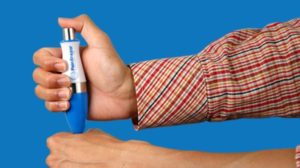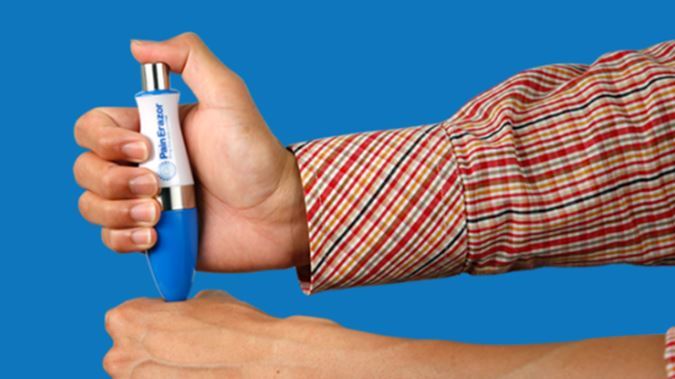A pen which its makers claim can click away pain without drugs has come under fire, with Consumer NZ saying there is no evidence the device works.
Brand Developers, the company marketing Pain Erazor, say the $160 unit works by exerting pressure on a quartz crystal, which produces a tiny electric charge.
According to the company’s website, when the pen is clicked against the point of pain about 30 or 40 times the body’s endorphins are stimulated, acting as a natural pain killer.

Brand Developers claimed the pain relief provided, “electro-analgesia”, was similar to TENS but had a “more effective, longer-lasting pain killing effect than a regular TENS unit”.
“The secret to the Pain Erazor is the science of Electro-Analgesia which utilises your body’s own natural pain response system to relieve the effects of all types of pain,” the product’s description read on its website.
“The Pain Erazor naturally stimulates your body’s endorphin’s[sic], nature’s own painkillers, to send real pain relief – right where you need it.”
Consumer NZ has investigated the pen in its latest newsletter, with the consumer watchdog acknowledging this type of pain relief was possible.
However they said Pain Erazor provided no evidence the pen had been successfully shown to work.
Consumer NZ said there was nothing in the product’s 116-page booklet which showed this had been proven in trials.
Consumer NZ said the Pain Erazor’s marketing showed how little regulatory scrutiny these kinds of medical devices were given before being allowed on the market.
No studies have to be filed to prove the product’s claims, and there is no required assessment or approval process before a product hits shelves.
The company supplying the product just has to register it on Medsafe’s online database, which isn’t open to the public, Consumer NZ said.
Rose quartz was one of several materials which produced an electric charge which could be used for pain relief through a process called transcutaneous electrical nerve stimulation (TENS).
University of Otago clinical senior lecturer Dr Bronwyn Thompson said a TENS current essentially “confuses” the information being sent from nerves to the central nervous system to activate natural pain relief.
There was still scepticism in the medical community about how effective TENS was for pain relief.
Earlier advertising for the pen was pulled in 2015 following a successful complaint to the Advertising Standards Authority (ASA).
The ASA decided the ad, which touted the pen as providing “fast, natural, effective relief for pain”, was misleading and the product claims hadn’t been properly proven in a double blind trial.
According to the ASA decision, the evidence Brand Developers submitted to support its pain claim was a literature review by a chiropractor.
Brand Developers did not respond to a request for comment from the Herald on Sunday.
-NewstalkZB





























